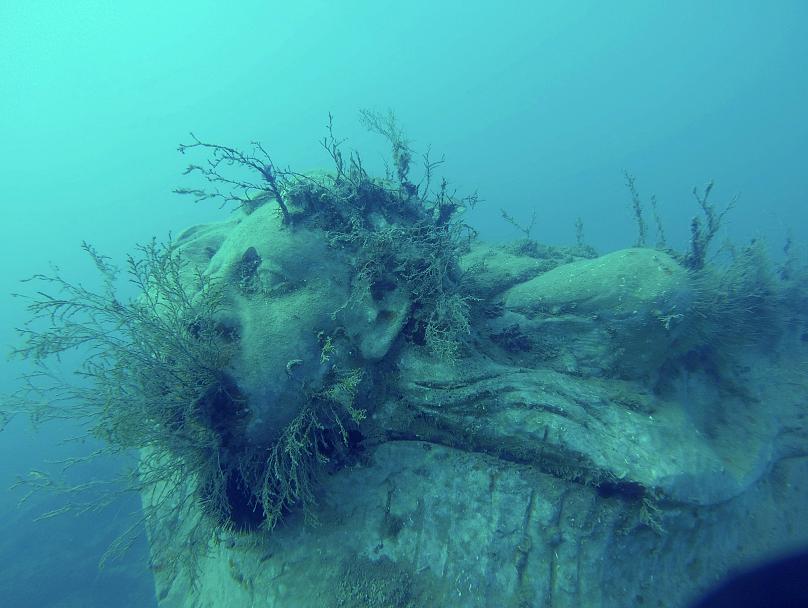
🌊 'Other-worldly' underwater sculptures save the sea
“If the sea dies, so does the fisherman. You can’t just take, you have to give too”. These underwater sculptures save the sea from being overfished.
Share this story!
Back in the 1980’s, the Italian fisherman Paolo Fanciulli began noticing signs of illegal trawling. Fish stocks were declining and the seabed became barren. In order to save both his livelihood and all of the sea’s ecosystem Fanciulli created the underwater “House of Fish”, back in 2013.
Mammoth stone sculptures now dot the seabed along a stretch of Tuscan coastline before the town of Talamone. The sculptures are made out of Carrara marble and are already thickly coated with algae. Right now, 39 sculptures rest on the bottom of the sea and 12 are currently being made.
The sunken statue method has been used in various coastal locations by environmentalists and authorities as an attempt to revive a decreasing marine population and dying ecosystems. “House of Fish” is an non-profit association of Paolo Fanciulli himself, as an effort to protect the coastline from disastrous bottom trawlers.
“They were devastating the sea and my way of life,” Fanciulli tells Euronews.green. “If the sea dies, so does the fisherman. You can’t just take, you have to give too.”
Bottom trawlers use nets with heavy weights which they drag along the seafloor. This tears away plants and marine life as they go. The method might get the fisher a hefty catch but they strip the seabed as they go.
“It’s like a hunter wanting to catch a wild boar and burning down the forest to get it,” says Fanciulli.
On the Maremma coast, the trawlers scrape away Posidonia sp, also known as Neptune grass, which forms vast underwater meadows.
“The life of the sea begins with the Posidonia,” explains Fanciulli. This seagrass functions as a nursery for the area’s marine life. Creatures like lobsters and sea bream lay their eggs in it.
Euronews writes that “Posidonia is a powerful carbon sink, absorbing 15 times more CO2 annually than an equivalent plot of the Amazon rainforest.”
Not only have Fanciulli’s “House of Fish” completely halted illegal trawling in the area, it has also encouraged marine life to return to the waters because of the regrowth of Posidonia. Fish numbers are rising once again and both lobsters and turtles have returned. Even tourists and visitors can visit the “museum” by scuba diving or snorkeling.
“With the House of Fish, we have created a cultural attraction, we are safeguarding the sea and we are helping repopulation,” says Fanciulli.
Picture: Casa Pesci via Euronews.green
By becoming a premium supporter, you help in the creation and sharing of fact-based optimistic news all over the world.


